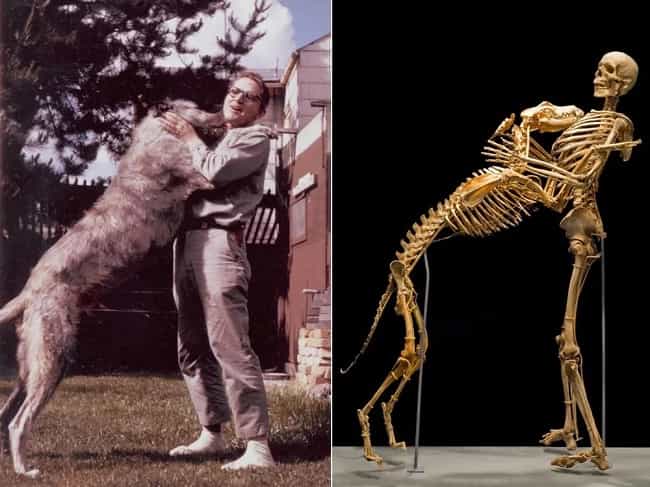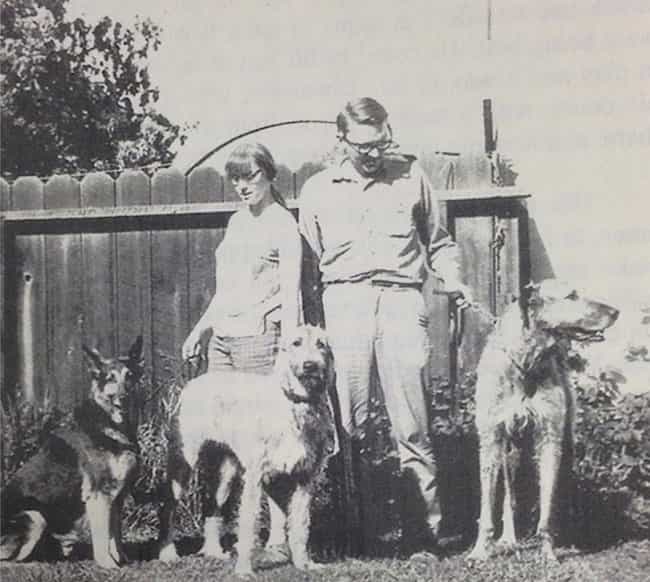Grover Krantz: The Scientist Who Donated His Body to Science

Grover Krantz was a man of many talents, a pioneering anthropologist, a respected teacher, and an individual who was willing to challenge conventional beliefs.
While he is most often remembered for his work on human evolution and his controversial stance on the existence of Bigfoot, his final act of scientific contribution—donating his body to science—left an enduring legacy that is as intriguing as the work he did during his lifetime.
Early Life and Education
Grover Sanders Krantz was born on November 5, 1931, in Salt Lake City, Utah. His early interests in anthropology and biology led him down a path that would shape his career and ultimately influence the field of physical anthropology. Krantz pursued his undergraduate studies at the University of Utah, where he received a Bachelor’s degree in anthropology. His academic journey continued at the University of California, Berkeley, where he earned his PhD in 1971, further cementing his position as a scholar of human evolution.

Career in Anthropology
Krantz’s professional career spanned several decades, with most of his time spent as a professor of physical anthropology at Washington State University. He specialized in hominid evolution, and his research focused on the evolution of bipedalism, the anatomical changes that allowed humans to walk upright. His work was both groundbreaking and highly respected, although it was his willingness to delve into fringe topics that made him a polarizing figure in the academic community.
Bigfoot: The Unconventional Scientist
One of the aspects that set Grover Krantz apart from his peers was his open-minded approach to controversial subjects, particularly the existence of Bigfoot. Krantz was among the few mainstream academics willing to publicly investigate the possibility of Bigfoot’s existence, which led to him being labeled as an eccentric. His belief was not without merit, as Krantz applied rigorous scientific methodology to his research on the subject, collecting and analyzing footprint evidence, photographs, and eyewitness accounts.
Though he was never able to conclusively prove the existence of Bigfoot, Krantz’s work in this area remains influential among cryptozoologists and continues to inspire curiosity.
The Final Contribution: Donating His Body to Science
Krantz’s most lasting and perhaps most unique contribution to science came not during his life, but in death. Before his passing, Krantz made the decision to donate his body to science. However, his donation was not to be used in traditional medical education or dissection, but for research in forensic anthropology.
Krantz died of pancreatic cancer on February 14, 2002, at the age of 70. True to his wishes, his body was donated to the University of Tennessee’s Forensic Anthropology Center, one of the leading institutions for studying human decomposition in what is colloquially known as “The Body Farm.” This research helps law enforcement agencies better understand how bodies decompose under different conditions, which aids in criminal investigations and the identification of human remains.
Skeleton Display at the Smithsonian
While his body was initially used for forensic research, the impact of his decision didn’t end there. After his body had served its purpose, Krantz’s skeleton was cleaned, preserved, and donated to the Smithsonian Institution’s National Museum of Natural History in Washington, D.C. There, his skeleton, along with the skeleton of his beloved Irish Wolfhound, Clyde, was put on display in an exhibit highlighting the importance of scientific body donations.
The Smithsonian display, featuring Krantz seated with Clyde by his side, serves as a reminder of his dedication to both his profession and his beloved pets. It also symbolizes his commitment to advancing human knowledge, even after death. Krantz and Clyde’s skeletal display has become an iconic and educational exhibit, inspiring visitors to consider the significance of body donation in scientific research.
Krantz’s Impact on Anthropology
Grover Krantz left an indelible mark on the field of anthropology. His academic work on human evolution, particularly in the areas of bipedalism and hominid anatomy, was widely regarded as innovative. His research contributed valuable insights into the way early humans adapted to their environment, which has influenced generations of anthropologists and archaeologists.
Despite his controversial views on Bigfoot, Krantz’s commitment to applying scientific rigor to unconventional topics demonstrated a unique intellectual curiosity. He challenged his peers to remain open-minded and not dismiss ideas that had yet to be conclusively disproven, which is a fundamental tenet of scientific inquiry.
A Lasting Legacy
The decision to donate his body to science underscores Krantz’s lifelong dedication to research and knowledge. His contribution to forensic anthropology has provided valuable data on decomposition, which continues to aid in criminal investigations today. Moreover, his skeleton’s display at the Smithsonian Institution serves as a powerful educational tool for both the public and future scientists.
Krantz’s life, work, and death illustrate a rare blend of scientific curiosity, bravery in the face of controversy, and an unwavering commitment to advancing human understanding. By donating his body, Grover Krantz left a legacy that goes beyond his research—he became a part of the very science he so passionately pursued.
Grover Krantz was a man of science, a thinker who wasn’t afraid to challenge the boundaries of conventional wisdom. His final act, the donation of his body to science, immortalized him in a unique way—both as a skeleton in a Smithsonian exhibit and as a contributor to forensic research that continues to shape the field. His work in anthropology, particularly his studies on human evolution and his forays into the unexplained, remain a testament to his intellectual bravery.
Though he may be remembered by many for his fascination with Bigfoot, his true legacy lies in his unwavering pursuit of knowledge and his final, profound contribution to science—one that continues to educate and inspire people to this day.
FAQ About Grover Krantz: The Scientist Who Donated His Body to Science
1. Who was Grover Krantz?
Grover Krantz was an American anthropologist, professor, and researcher known for his work in human evolution, specifically on bipedalism and hominid anatomy. He also gained notoriety for his research on the existence of Bigfoot, a controversial topic within the academic community.
2. What were Grover Krantz’s main contributions to anthropology?
Krantz made significant contributions to the understanding of human evolution, particularly in the development of bipedalism. He conducted research on the anatomy of early hominids and how they adapted to walking upright. His work influenced the field of physical anthropology and helped shape modern evolutionary studies.
3. Why is Grover Krantz associated with Bigfoot?
Krantz was one of the few mainstream academics who openly investigated the possibility of Bigfoot’s existence. While his stance was controversial, he applied scientific methods to the study, collecting evidence and analyzing it in a rigorous manner. Though he never found conclusive proof, his work in this area remains influential in cryptozoology.
4. How did Grover Krantz donate his body to science?
Before his death, Krantz decided to donate his body to science. His body was used in forensic anthropology research at the University of Tennessee’s Forensic Anthropology Center, also known as “The Body Farm,” where scientists study human decomposition. His skeleton was later preserved and displayed at the Smithsonian Institution.
5. Where is Grover Krantz’s skeleton displayed?
Grover Krantz’s skeleton is displayed at the Smithsonian Institution’s National Museum of Natural History in Washington, D.C. His skeleton is paired with that of his beloved Irish Wolfhound, Clyde, in an exhibit that educates visitors about the importance of donating bodies to science.
6. Why did Grover Krantz’s skeleton get displayed at the Smithsonian?
Krantz’s skeleton was displayed at the Smithsonian to honor his decision to donate his body to science and to educate the public about forensic anthropology and body donations. The exhibit also emphasizes the scientific and educational value of body donations in advancing human knowledge.
7. What was Krantz’s view on scientific research?
Grover Krantz believed in rigorous scientific inquiry, even when studying unconventional topics like Bigfoot. He was open-minded and encouraged the application of scientific methods to any subject, regardless of how controversial it might be. His approach highlighted the importance of curiosity and the scientific process.
8. How did Grover Krantz die?
Grover Krantz passed away on February 14, 2002, at the age of 70, due to pancreatic cancer. Prior to his death, he arranged for his body to be donated to science, contributing to research in forensic anthropology.
9. How did Krantz’s work in forensic anthropology contribute to science?
By donating his body to forensic anthropology research, Krantz contributed to the study of human decomposition, which helps forensic scientists and law enforcement solve crimes and identify human remains. His body provided valuable data for understanding how human bodies decompose under different environmental conditions.
10. What is Grover Krantz’s legacy?
Krantz’s legacy includes his groundbreaking work in anthropology, his contributions to human evolution studies, and his unique final contribution to forensic science. He is also remembered for his controversial but scientific exploration of Bigfoot and his dedication to expanding human knowledge, even in death.
11. Did Grover Krantz’s belief in Bigfoot affect his scientific reputation?
Krantz’s belief in the possibility of Bigfoot made him a polarizing figure in the scientific community. Some colleagues distanced themselves from his work on the subject, but Krantz was respected for his scientific rigor and methodology, regardless of the topic. His willingness to explore unconventional ideas in a scientific manner was part of what made him a unique figure in anthropology.
12. What can we learn from Grover Krantz’s decision to donate his body to
science?
Grover Krantz’s decision highlights the importance of body donation in advancing scientific research. His contribution to forensic anthropology continues to impact the field, offering valuable insights into decomposition and helping law enforcement solve criminal cases. It also serves as a reminder of the many ways individuals can contribute to science, even after death.
